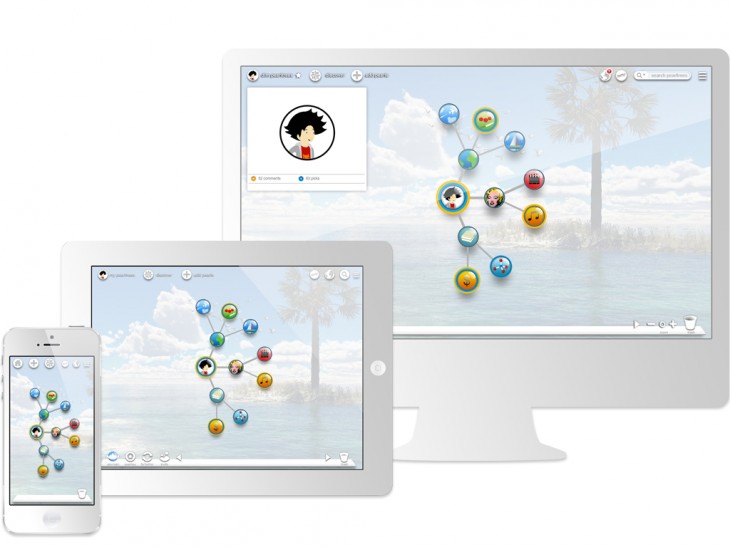
Pearltrees, the social curation service that helps you organise Web content, photos and notes (‘pearls’) into mindmap-style ‘trees’, is today unveiling a new look, new features for paying users and revised pro account tiers.
Pearltrees was launched in December 2010 and now boasts two million monthly active users, collecting over 50,000 links every day.
The new UI, codenamed ‘Asimov’ by the French startup, is designed to provide a coherent, simpler experience across the Web, iOS and a forthcoming Android version. There’s nothing enormously different about it, although there’s now an Apple-style ‘dock’ at the bottom of the page for universal options and a subtly more friendly look that uses responsive design to optimize the layout for different screen sizes.
The updated iOS version, which will be available as soon as it’s approved by Apple, promises to get rid of one my biggest bugbears when it comes to curation apps – the Safari bookmarklet. Complicated to install and easy to forget about, the bookmarklet isn’t a particularly appealing feature and Pearltrees has circumvented the need for it by adding an in-app browser for finding new ‘pearls’ from around the Web to add to your trees.

Meanwhile, archiving and editing has been improved for those who pay up for a premium account. Pearltrees says that it wants to “blur the frontier between curation and creation” by allowing users to edit and annotate Web pages that they collect and share using the product.
You can see why this might be useful for researchers, particularly, adding their own notes about why they’ve added certain pearls to a tree. It could also be used to highlight particular phrases or passages. Annotations and edits can be published so that anyone viewing that tree can see them.

Meanwhile, premium accounts have been expanded into multiple tiers, as opposed to the one paid account option previously available. Since October 2012, users have been able to pay €2.69 ($3.48) per month or €26.99 ($34.90) per year for the ability share trees with private groups, premium customer support and a guarantee of no ads in the future.
Now, there are three paid tiers:
– Personal plan : $2.99/ month ($29.99 / year) – 2.69€/month (26.99€ / year)
– Advanced plan : $3.99/ month ($39.99 / year) – 3,59€/month (35.99€ / year)
– Professional plan : $9.99/month ($99.99 / year) – 8,99€/month (89.99€ / year)
Personal accounts get full privacy controls for trees, teams and messages; customizable backgrounds and pearl images; priority support and 1GB of storage. The Advanced tier adds the ability to edit content and archive Web pages and screenshots, while storage is upped to 3GB. Finally, professional accounts add data protection in the form of daily backup, PIN lock and encryption of data, with storage increased to 10GB.
The new-look Pearltrees is available on the Web now, with the iOS update available as soon as its approved.
This post has been updated with updated pricing for the new tiers.
Image credit: Thinkstock
Get the TNW newsletter
Get the most important tech news in your inbox each week.



